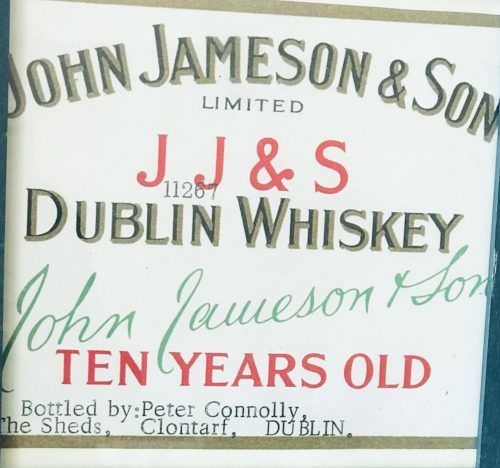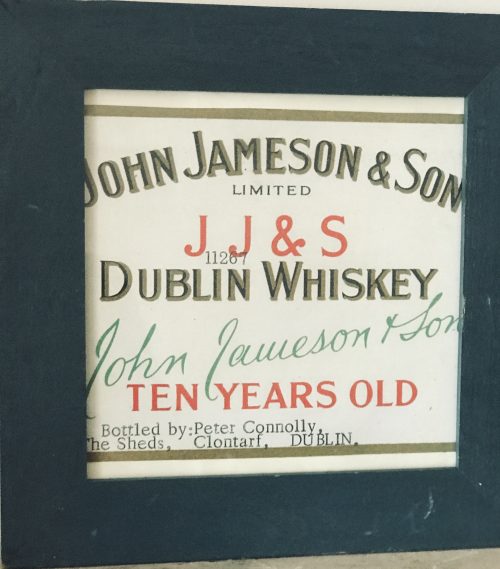





The Munster hurling final day is one of the great occasions in Irish sport.Be it Semple Stadium, the Gaelic Grounds or in Páirc Uí Chaoimh, it is a huge date on the provincial and national stage.It is a well-documented fact that on Munster final day, carloads of supporters would travel from the Glens of Antrim to Thurles to view the protagonists in action.
It’s 30 years ago now but it was a similar situation in 1990 when the two old foes collided on a scalding July day in Thurles .Tipperary had the MacCarthy Cup in their possession back then too having beaten Antrim in the All-Ireland final the previous September.Cork, on the other hand, were down in the dumps having lost to what proved to be a very poor Waterford team in 1989, a Waterford team that were subsequently hammered by Tipp in the Munster final.Cork went into the Munster final in 1990 as raging underdogs, almost no-hopers against the reigning All-Ireland champions.But it was a different Cork team that they were facing this time. In attitude as much as anything, as Teddy McCarthy and Tomás Mulcahy were both out for the provincial decider through injury.

The Canon and Gerald brought a fresh and renewed impetus to the Cork set up, brought back a few players who had been discarded and going up to Thurles there was a calm and cautiously optimistic approach.
For Cork to be in the hunt they needed a positive start to have any chance of outright victory, they needed to unsettle Tipp early on and that is exactly what transpired.
Cork started brilliantly, inspired by Jim Cashman who was a dominant figure at centre-back, while Tony O’Sullivan, later Hurler of the Year, was hugely influential at wing-forward, as the below clip from the @corkhurlers1 twitter shows.A Tipperary laden with great players like Nicky English, Pat Fox, the Bonner brothers, Declan Ryan, John Leahy and Bobby Ryan quickly realised that this was a different Cork team than the one who had went down so meekly to Waterford a year earlier.
The Cork crowd really got behind the team and as the game progressed an unlikely hero was to emerge from a small club in West Cork.
Argedeen Rangers’ Mark Foley had one of those magical days that you could only ever dream about. Everything ‘The Dentist’ touched turned to gold, there was no holding him.

Tipp couldn’t cope and the rest is history as Cork swept to one of their greatest Munster Final triumphs.
One can recall sitting in the Ryan Stand that day with Cork Examiner sports editor Tom Aherne and both of us losing the run of ourselves surrounded by Tipp supporters who were in a state of shock. Foley’s performance that day has stood the test of time as one of the greatest individual displays ever given in a Munster Final or otherwise.
But there were heroes everywhere, from Ger Cunningham out. Teddy McCarthy, John Fitzgibbon, Tomás Mulcahy, Kevin Hennessy, Denis Walsh, Ger Fitzgerald, Tony O’Sullivan to mention just a handful.
Jim Cashman had the game of his life at number six completely stifling Declan Ryan. But it was Foley’s day.
That performance would be nearly impossible to repeat but in the All Ireland final against Galway he scored 1-1 which was a major contribution as Cork regained the McCarthy Cup.
Tipp exacted revenge a year later in a Munster final replay when Jim Cashman was controversially taken out of the game.
The Cork Tipp rivalry was as intense as it ever was back then and Cork won back the Munster final in 1992.
The Cork team that day in 1990 was: G Cunningham; J Considine, D Walsh, S O’Gorman; S McCarthy, J Cashman, K McGuckin; P Buckley, B O’Sullivan; D Quirke, M Foley, T O’Sullivan; G Fitzgerald, K Hennessy, J Fitzgibbon
Scorers: Mark Foley 2-7, John Fitzgibbon 2-0, Tony O’Sullivan 0-5, Cathal Casey, Ger Fitzgerald, Kevin Hennessy, David Quirke 0-1 each.

In the All-Ireland final a short few months later Cork defeated Galway in a seven-goal thriller in Croke Park, winning in a scoreline of 5-15 to 2-21.
The Cork scorers that day were: John Fitzgibbon 2-1, Kevin Hennessy 1-4, Tomás Mulcahy 1-2, Mark Foley 1-1, Teddy McCarthy 0-3, Tony O’Sullivan 0-2, Ger Fitzgerald, Kieran McGuckin 0-1 each.



"It’s worth stating at the outset that my favourite sports moment of all time is not when Tipperary’s Nicky English kicked that soccer-style goal past Ger Cunningham of Cork in the Munster final. Not exactly. Not quite. But we’ll come back to that.First, some context. In the summer of 1987 I was nine years old. It was the first year that my parents had deemed me old enough to bring to matches. And the match-going experience was decidedly different to what it is these days.
For one thing, the roads were all shite, as the EU had yet to wave their magic motorway wand. Travelling to pretty much anywhere was likely at some point to take you down a boreen with grass up the middle of it. But apparently the GAA hadn’t noticed this particular problem. Believe it or not, Tipperary played five matches in the Munster hurling championship that year, and four of them were in the hurling mecca that is Killarney.
And yes, before you ask, we brought sandwiches and flasks of tea to every game. Given how long it took to get from south Tipp to Killarney in those days we should have brought sleeping bags as well.
The night before a game my parents would pore over a map, picking a route and, depending on the opposition, identifying the arteries that were ripe for congestion. “The Clare crowd will surely come through Ballydesmond, so if we go through Millstreet we’ll avoid them until Barraduff.” Ah, the glamour.
My Dad drove, while my Mam took navigation duties, the toughest task being the effort of folding the gargantuan map in a manner that allowed her to read it without obscuring the entire windshield.
Two family friends came to most of the games with us. Tommy Sweeney wore a baseball cap and puffed on a pipe, while delivering droll witticisms from the free side of his mouth. Patrick “Butt” O’Dwyer had a loud laugh and an easy manner. Long retired from the pitch, he had once been renowned for his on-field temper but by that stage the only thing that seemed to raise his ire was bad referees. My sister Michelle and I would sit wedged in between these two bears of men. There were no seat belts but I’d wager we could have survived the car flipping over with those two on either side .
I suspect that everyone in the car other than me was travelling more in hope than expectation. Sixteen years of losing will do that to you. What’s the opposite of a magician pulling a rabbit from a hat? That was Tipperary – finding new and painful ways to lose every year.


This has been a big season for the players and to have come this close and not won a trophy would have been a major disappointment
|
|
Northampton rugby director John Steele |

A young Munster fan celebrates his side's try
|

Both teams found it hard to break each other down
|











Paddy Irish Whiskey traces its roots all the way back to 1779, but it started simple, and the recipe remained consistent. As its popularity grew across Ireland, Paddy eventually made it overseas. A century later, it won first-prize medals in Philadelphia (1876), Sydney (1879) and Cork (1883), along with a gold medal at the World’s Fair in Paris (1878). By 1930, Paddy could be found in cosmopolitan cities like Milan, Shanghai and Bangkok, and in 80+ countries worldwide.
Theres a reason Paddy has been triple distilled the same way in County Cork Ireland for nearly a quarter-millennium. Some good things don’t come to an end.



